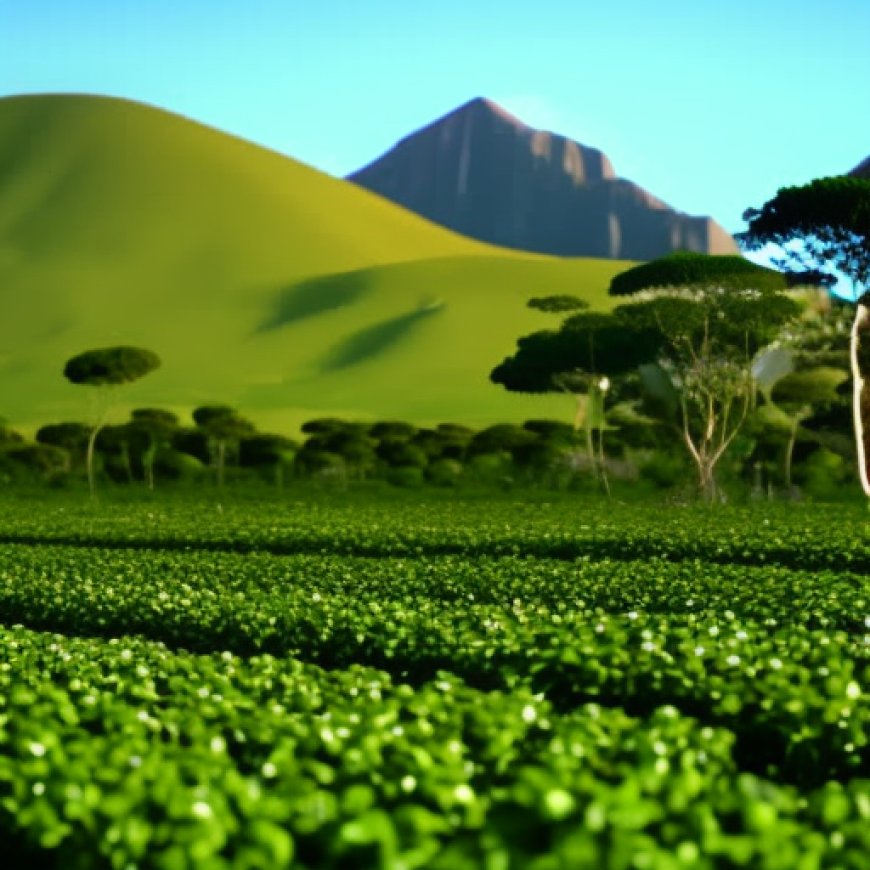Transforming agricultural systems in Mozambique


Transformative Dryland Crops Project in Mozambique
Introduction
With 96% of its population engaged in farming and crop production, residents of the province of Niassa in the northern part of Mozambique rely heavily on agriculture for both their own nutritional needs and household income.
Challenges in Agricultural Development
Farmers in Niassa face many challenges in achieving successful agricultural development, including a 60% yield gap between male head of household farms and female-led farms. While improved crop varieties are available, their rate of adoption is uneven across the province.
Project Overview
The Transformative Dryland Crops Project, implemented by CIMMYT in partnership with key collaborators and supported by Irish Aid, aims to enhance food security and boost incomes for more than 14,000 farm families in Niassa.

Goals and Approach
The Transformative Dryland Crops Project will focus on crops known for their drought tolerance, such as pigeon peas, groundnuts, common beans, and soybeans. By adopting a ‘hub-model’ approach, the project will enhance learning and technology dissemination, facilitating collaboration among farmers, farmer organizations, service providers, buyers, and processors. This collaborative effort will ensure the effective implementation of the project and maximize its impact on the ground.
Emphasis on Sustainable Development Goals (SDGs)
The project aims to contribute to several SDGs, including:
- Goal 1: No Poverty
- Goal 2: Zero Hunger
- Goal 5: Gender Equality
- Goal 13: Climate Action
- Goal 15: Life on Land
“Through collaborative efforts with local stakeholders, we aim to narrow the gender yield gap, increase adoption rates of improved crop varieties, and enhance overall agricultural productivity,” said Irish AID Ambassador, Adrian Fitzgerald.

Transformative Changes
Besides increased agricultural productivity, enhanced food security, and income generation, the Transformative Dryland Crops Project promotes gender equity, increases resilience to climate shocks, implements sustainable resource management, builds capacity among farmers and extension agents, and facilitates inclusive market systems.
“The key part of our implementation plan is the knowledge that all these systems and stakeholders are interconnected and any intervention in one part of the system must account for its effects on the entire system in order to be sustainable,” said Moses Siambi, CIMMYT Africa regional director.
SDGs, Targets, and Indicators in the Article
1. Sustainable Development Goals (SDGs) Addressed
- SDG 1: No Poverty
- SDG 2: Zero Hunger
- SDG 5: Gender Equality
- SDG 8: Decent Work and Economic Growth
- SDG 13: Climate Action
- SDG 15: Life on Land
2. Specific Targets Identified
- Target 1.1: By 2030, eradicate extreme poverty for all people everywhere
- Target 2.3: By 2030, double the agricultural productivity and incomes of small-scale food producers, in particular women
- Target 5.a: Undertake reforms to give women equal rights to economic resources, as well as access to ownership and control over land and other forms of property, financial services, inheritance, and natural resources
- Target 8.3: Promote development-oriented policies that support productive activities, decent job creation, entrepreneurship, creativity, and innovation, and encourage the formalization and growth of micro-, small-, and medium-sized enterprises
- Target 13.1: Strengthen resilience and adaptive capacity to climate-related hazards and natural disasters in all countries
- Target 15.2: By 2020, promote the implementation of sustainable management of all types of forests, halt deforestation, restore degraded forests, and substantially increase afforestation and reforestation globally
3. Indicators Mentioned or Implied
- Indicator 1.1.1: Proportion of population below the international poverty line, by sex, age, employment status, and geographical location
- Indicator 2.3.1: Volume of production per labor unit by classes of farming/pastoral/forestry enterprise size
- Indicator 5.a.1: (a) Proportion of total agricultural population with ownership or secure rights over agricultural land, by sex; and (b) share of women among owners or rights-bearers of agricultural land, by type of tenure
- Indicator 8.3.1: Proportion of informal employment in non-agriculture employment, by sex
- Indicator 13.1.1: Number of deaths, missing persons, and directly affected persons attributed to disasters per 100,000 population
- Indicator 15.2.1: Progress towards sustainable forest management
Table: SDGs, Targets, and Indicators
| SDGs | Targets | Indicators |
|---|---|---|
| SDG 1: No Poverty | Target 1.1: By 2030, eradicate extreme poverty for all people everywhere | Indicator 1.1.1: Proportion of population below the international poverty line, by sex, age, employment status, and geographical location |
| SDG 2: Zero Hunger | Target 2.3: By 2030, double the agricultural productivity and incomes of small-scale food producers, in particular women | Indicator 2.3.1: Volume of production per labor unit by classes of farming/pastoral/forestry enterprise size |
| SDG 5: Gender Equality | Target 5.a: Undertake reforms to give women equal rights to economic resources, as well as access to ownership and control over land and other forms of property, financial services, inheritance, and natural resources | Indicator 5.a.1: (a) Proportion of total agricultural population with ownership or secure rights over agricultural land, by sex; and (b) share of women among owners or rights-bearers of agricultural land, by type of tenure |
| SDG 8: Decent Work and Economic Growth | Target 8.3: Promote development-oriented policies that support productive activities, decent job creation, entrepreneurship, creativity, and innovation, and encourage the formalization and growth of micro-, small-, and medium-sized enterprises | Indicator 8.3.1: Proportion of informal employment in non-agriculture employment, by sex |
| SDG 13: Climate Action | Target 13.1: Strengthen resilience and adaptive capacity to climate-related hazards and natural disasters in all countries | Indicator 13.1.1: Number of deaths, missing persons, and directly affected persons attributed to disasters per 100,000 population |
| SDG 15: Life on Land | Target 15.2: By 2020, promote the implementation of sustainable management of all types of forests, halt deforestation, restore degraded forests, and substantially increase afforestation and reforestation globally | Indicator 15.2.1: Progress towards sustainable forest management |
Source: cimmyt.org








